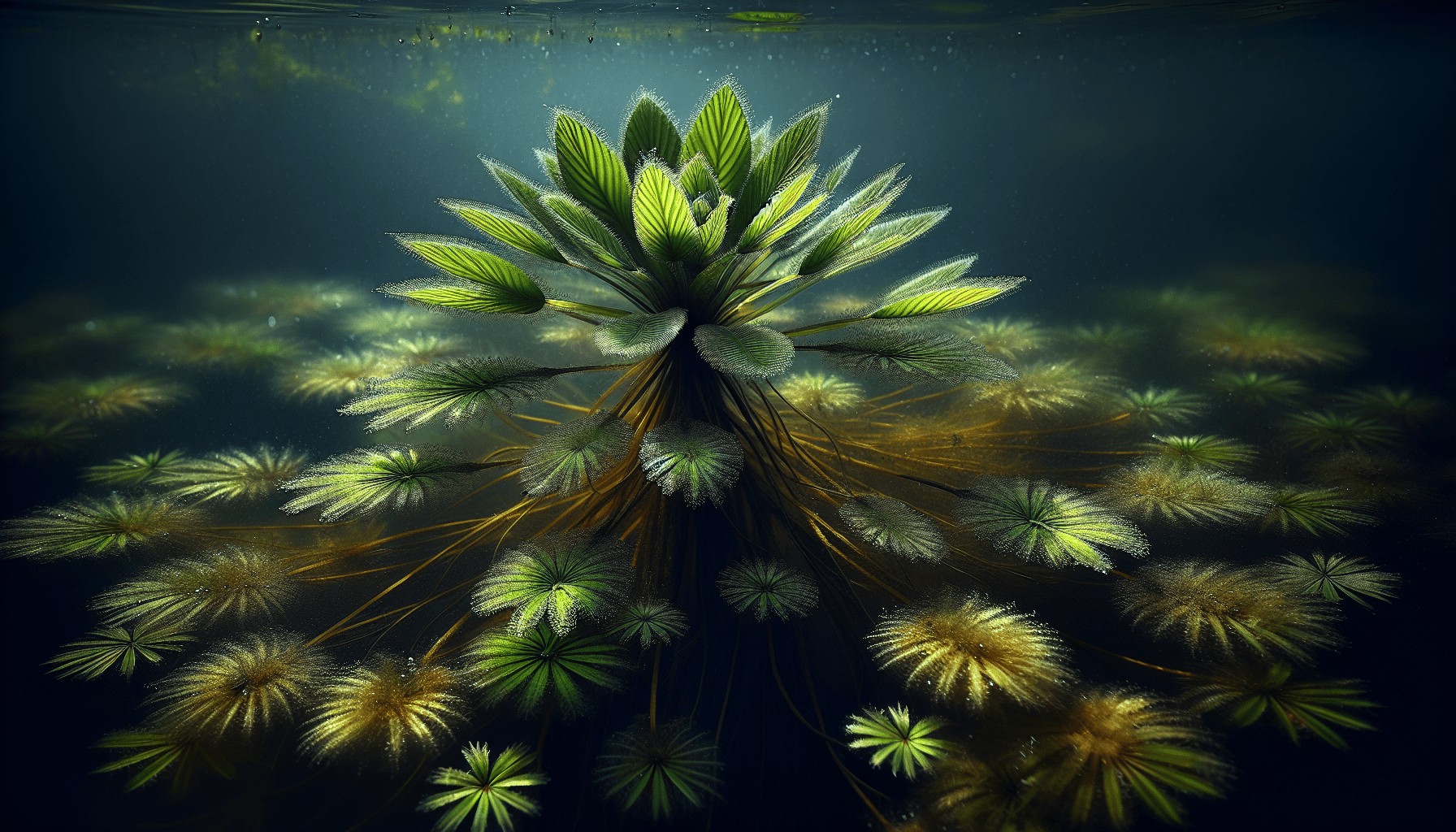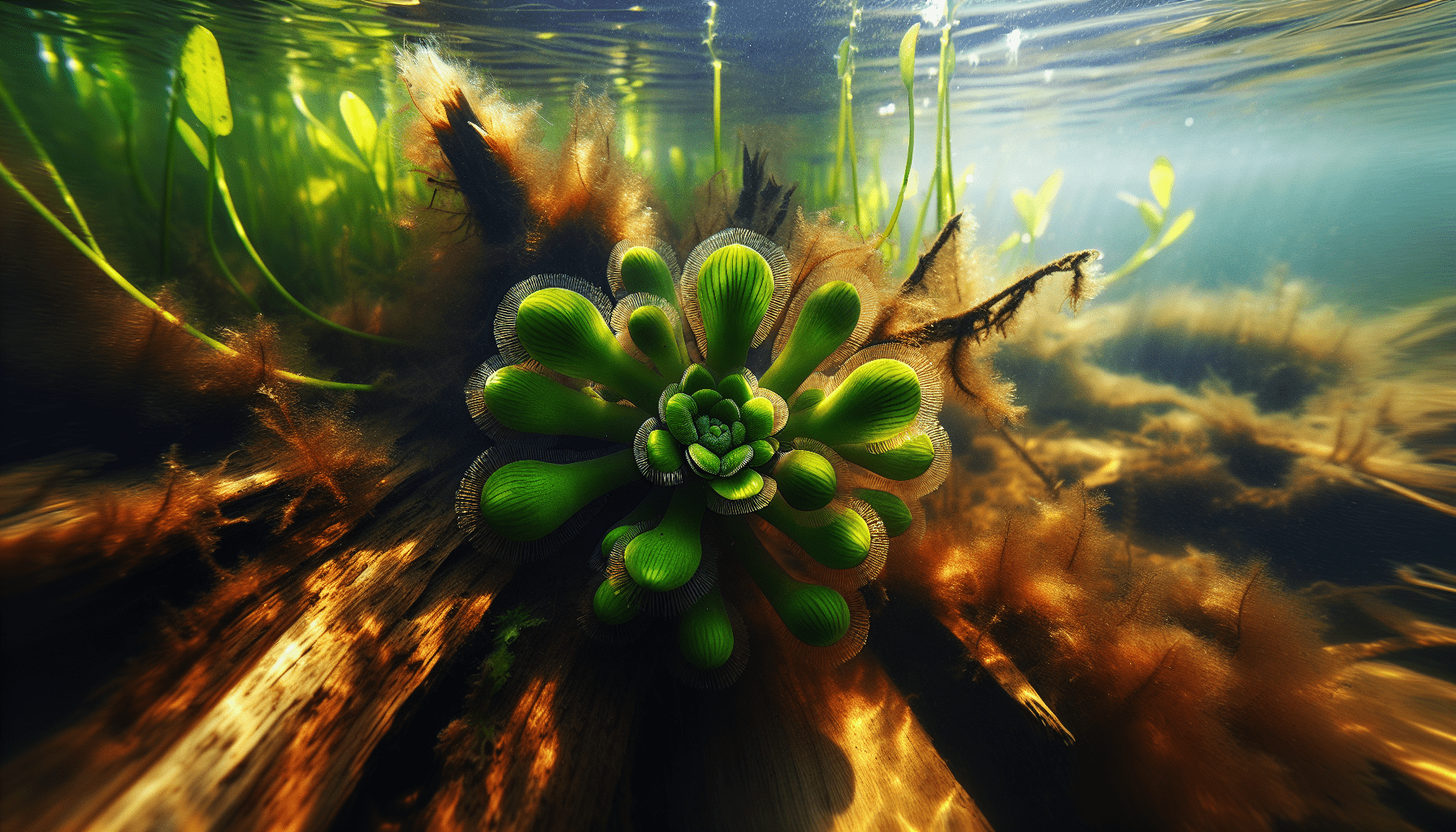In your exploration of aquatic ecosystems, you may frequently come across diverse plant species, both beneficial and intrusive. Among these, a relatively understudied yet notable species is the aquatic weed known as Limnobium. As you unfold the layers of this fascinating article, you will be exposed to an expansive wealth of knowledge about Limnobium, its identification, biological characteristics, and the ecological implications of its presence within an ecosystem. The objective is to equip you with enough information to comprehend the ecological significance and nuances of this aquatic weed, thereby deepening your understanding of aquatic biodiversity.

Understanding Limnobium as Aquatic Weed
Definition of Limnobium
Limnobium is a genus of floating aquatic plants endemic to the freshwater environments. It is also well-known as pondweed or frogbit. Because of its rapid proliferation capabilities and invasive nature, it is commonly referred to as an aquatic weed. With the ability to survive a broad array of environmental conditions, Limnobium can quickly colonize new habitats, posing challenges to the ecological balance in these areas.
General Characteristics of Limnobium
Limnobium possesses several distinguishing features that facilitate its aquatic lifestyle. This aquatic weed typically displays a floating habit, characterized by rosettes or mats of plants floating on the surface of the water. Its leaves are generally heart-shaped or oval, with a glossy green upper surface. Underneath the leaf is a spongy tissue that aids flotation. Limnobium bears small, inconspicuous flowers that are typically white or pale yellow.
Popular Species of Limnobium
Among the diverse Limnobium genus, the most common species include Limnobium laevigatum and Limnobium spongia. The former, also known as the South American spongeplant or Amazon frogbit, is a popular aquarium plant notorious for its invasive behavior. The latter, commonly known as North American or American frogbit, is native to the southeastern United States and has been introduced to other parts of the world.
Habitat and Distribution of Limnobium
Common Habitats of Limnobium
Limnobium primarily inhabits freshwater environments. It thrives in natural and artificial water bodies such as lakes, rivers, ponds, and reservoirs. While it prefers stagnant or slow-moving water, this hardy plant can tolerate a range of conditions, including varying water pH, temperature, and nutrient levels.
Geographical distribution of Limnobium Globally
Historically, Limnobium originated in Central and South America. However, due to its rapid growth and invasive ability, it has spread to other parts of the world over the years. Today, it is widely distributed in North America, Europe, and parts of Asia.
Morphology and Anatomy of Limnobium
Detailed Description of Limnobium Structure
Limnobium exhibits the typical morphology of a floating aquatic plant. It has a branched stem growing up to 50 cm long, with alternate, broadly oval, glossy green leaves. The leaves are heart or kidney-shaped, with spongy undersides that help the plant to float. The roots are feathery and pendulous, extending into the water to absorb nutrients. The flowers are solitary and bisexual, produced within a leaf axil.
Adaptations for Aquatic Life
For the aquatic environment, Limnobium has evolved several specialized morphological and physiological features. Its spongy leaf tissue serves as a floatation device, helping it to stay afloat and maximize photosynthesis. Its feathery roots function as water filters, absorbing nutrients directly from the water. These adaptations facilitate its survival and proliferation in aquatic habitats.

Reproduction Cycle of Limnobium
Sexual Reproduction Mechanisms
Limnobium reproduces sexually by flowering and setting seeds. Its flowers are unisexual and typically self-pollinating. Following pollination, a small fruit containing numerous seeds develops, which then disperse, germinate, and give rise to new plants.
Asexual Reproduction in Limnobium
Aside from sexual reproduction, Limnobium also reproduces asexually. This often occurs through vegetative propagation, wherein new plants develop from the plant axes, leaf nodes, or fragmenting plant parts. This mode of reproduction facilitates its invasive spread.
Environmental Conditions Triggering Reproduction
The reproductive cycle of Limnobium is influenced by environmental conditions. High nutrient levels, warm temperatures, and adequate light conditions promote growth and proliferation, enhancing both sexual and asexual reproduction.
Ecological Role of Limnobium
Role in Food Chains
In the aquatic ecosystem, Limnobium serves an important role in the food chain. It provides a habitat for various aquatic invertebrates, which in turn are food for fish and other aquatic organisms. Furthermore, the plant itself can be consumed by herbivorous wildlife and waterfowl.
Contribution to Aquatic Ecosystems
Limnobium contributes to the nutrient cycling in aquatic ecosystems, by absorbing nutrients directly from water. Moreover, it provides oxygenation and shades the water, which can reduce algal blooms and contribute to overall water quality.
Interactions with Other Organisms
Limnobium interacts with a diverse range of organisms in its habitat, including various aquatic invertebrates, fish, amphibians, birds, and mammals. It provides a platform for oviposition for some insects, acts as a nursery for fish spawn, and serves as a feeding and nesting site for birds.
Economic Impacts of Limnobium
Impacts on Fishing Industry
High infestations of Limnobium can hinder commercial and recreational activities, including fishing. Massive growth can obstruct access to water bodies, disrupt fishing operations, and lower fish populations by altering the availability of food and oxygen, affecting the fishing industry.
Effects on Water Treatment and Supply
Limnobium can affect water treatment facilities and water supply systems. Its rapid proliferation can clog channels, filters, and pipes, causing operational challenges. Moreover, its high nutrient consumption can alter water chemistry, potentially affecting the water quality and treatment process.
Implications for Tourism and Recreation
Invasive growth of Limnobium can affect recreational water activities such as boating, swimming, and water sports. It can degrade the aesthetic appeal of water bodies, impacting tourism and potentially causing significant economic losses.
Control and Management of Limnobium
Methods of Physical Control
Physical control is the most basic and often the first line of defense against Limnobium. This includes manual removal, wherein individual plants or mats are physically removed from the water body. Also, water management strategies such as water drawdown can be used to control the proliferation of this aquatic weed.
Chemical Control of Limnobium
Chemical control involves the use of herbicides to curb the spread of Limnobium. Specific herbicides have been approved for aquatic use and can be effective when used correctly. However, care must be taken as these chemicals can have negative effects on non-target species and the environment.
Biological Control Methods
Biological control involves using natural predators, parasites, or diseases to control invasive species such as Limnobium. Several insects, fish, and waterfowl are known to feed on Limnobium and could potentially be used as biological control agents. Biological controls have the advantage of being self-sustaining and environmentally friendly compared to chemical methods.
Sustainability of Control Methods
Sustainable management of Limnobium requires a multifaceted approach integrating physical, chemical, and biological control methods. Prevention is also an essential part of sustainable management, involving education about the risks posed by the introduction of invasive species, monitoring water bodies for early detection, and prompt eradication of new infestations.
Threats to Limnobium
Threats from Human Activities
Human activities represent a significant threat to Limnobium. The introduction of Limnobium into new habitats, often unintentionally via the aquarium trade or boating activities, can lead to invasive infestations. Furthermore, disturbances caused by human activities can provide opportunities for the spread and establishment of Limnobium.
Natural Threats and Predators
Natural threats to Limnobium include other invasive species that compete for resources. Furthermore, several predators, parasites, and diseases are known to attack Limnobium, potentially controlling its population.
Utilization of Limnobium
Limnobium in Aquariums
Despite its invasive nature, Limnobium is popular in the aquarium trade due to its attractive appearance and ability to improve water quality. It provides cover for fish, absorbs excess nutrients, and contributes to the overall health of the aquatic ecosystem in the aquarium.
Use of Limnobium in Traditional Medicine
Some species of Limnobium have been used in traditional medicine. For example, in some cultures, it is used for treating ailments such as skin diseases, ulcers, and wounds.
Limnobium as a Biological Research Model
Due to its high productivity and adaptability, Limnobium has potential as a model organism for biological research. Studies involving this aquatic weed can provide insights into invasive species biology, ecology, and control.
Conservation Status of Limnobium
Current Conservation Status
Given its invasive nature and wide distribution, Limnobium is not currently considered a threatened species globally. However, with the increasing pressure of human activities, its status may change in localized areas.
Conservation Efforts for Limnobium
Conservation efforts for Limnobium mainly involve controlling its spread and managing infestations to prevent damage to aquatic ecosystems. Locally, programs can include the manual removal of the weed, public education, and the strategic use of control strategies.
Future Prospects for Limnobium Conservation
The future of Limnobium depends largely on management efforts and our understanding of its biology and ecology. Strengthening monitoring networks and raising public awareness are essential steps for its control. Furthermore, ongoing research into more sustainable and effective control strategies will be critical to managing the impact of this prolific aquatic weed in the future.